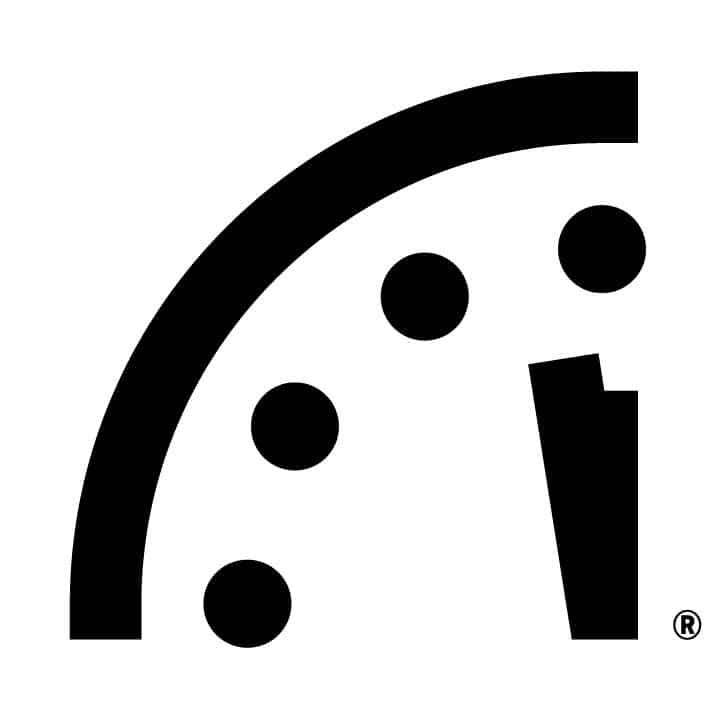A retreat from arms control creates a dangerous nuclear reality
The world is sleepwalking its way through a newly unstable nuclear landscape. The arms control boundaries that have helped prevent nuclear catastrophe for the last half century are being steadily dismantled.
In several areas, a bad situation continues to worsen. Throughout 2019, Iran increased its stockpile of low-enriched uranium, increased its uranium enrichment levels, and added new and improved centrifuges—all to express its frustration that the United States had withdrawn from the Iran nuclear deal (formally known as the Joint Comprehensive Plan of Action, or JCPOA), re-imposed economic sanctions on Iran, and pressured other parties to the Iran nuclear agreement to stop their compliance with the agreement. Early this year, amid high US-Iranian tensions, the US military conducted a drone air strike that killed a prominent Iranian general in Iraq. Iranian leaders vowed to exact “severe revenge” on US military forces, and the Iranian government announced it would no longer observe limits, imposed by the JCPOA, on the number of centrifuges that it uses to enrich uranium.
Although Iran has not formally exited the nuclear deal, its actions appear likely to reduce the “breakout time” it would need to build a nuclear weapon, to less than the 12 months envisioned by parties to the JCPOA. At that point, other parties to the nuclear agreement—including the European Union and possibly Russia and China—may be compelled to acknowledge that Iran is not complying. What little is left of the agreement could crumble, reducing constraints on the Iranian nuclear program and increasing the likelihood of military conflict with the United States.
The demise of the Intermediate-Range Nuclear Forces (INF) Treaty became official in 2019, and, as predicted, the United States and Russia have begun a new competition to develop and deploy weapons the treaty had long banned. Meanwhile, the United States continues to suggest that it will not extend New START, the agreement that limits US and Russian deployed strategic nuclear weapons and delivery systems, and that it may withdraw from the Open Skies Treaty, which provides aerial overflights to build confidence and transparency around the world. Russia, meanwhile, continues to support an extension of New START.
The assault on arms control is exacerbated by the decay of great power relations. Despite declaring its intent to bring China into an arms control agreement, the United States has adopted a bullying and derisive tone toward its Chinese and Russian competitors. The three countries disagree on whether to pursue negotiations on outer space, missile defenses, and cyberwarfare. One of the few issues they do agree on: They all oppose the Treaty on the Prohibition of Nuclear Weapons, which opened for signature in 2017. As an alternative, the United States has promoted, within the context of the review conference process of the Nuclear Non-Proliferation Treaty (NPT), an initiative called “Creating the Environment for Nuclear Disarmament.” The success of this initiative may depend on its reception at the 2020 NPT Review Conference—a landmark 50th anniversary of the treaty.
US efforts to reach agreement with North Korea made little progress in 2019, despite an early summit in Hanoi and subsequent working-level meetings. After a North Korean deadline for end-of-year progress passed, Kim Jong Un announced he would demonstrate a new “strategic weapon” and indicated that North Korea would forge ahead without sanctions relief. Until now, the willingness of both sides to continue a dialogue was positive, but Chairman Kim seems to have lost faith in President Trump’s willingness to come to an agreement.
Without conscious efforts to reinvigorate arms control, the world is headed into an unregulated nuclear environment. Such an outcome could reproduce the intense arms race that was the hallmark of the early decades of the nuclear age. Both the United States and Russia have massive stockpiles of warheads and fissile material in reserve from which to draw, if they choose. Should China decide to build up to US and Russian arsenal levels—a development previously dismissed as unlikely but now being debated—deterrence calculations could become more complicated, making the situation more dangerous. An unconstrained North Korea, coupled with a more assertive China, could further destabilize Northeast Asian security.
As we wrote last year and re-emphasize now, any belief that the threat of nuclear war has been vanquished is a mirage.
An insufficient response to an increasingly threatened climate
In the past year, some countries have taken action to combat climate change, but others—including the United States, which formalized its withdrawal from the Paris Agreement, and Brazil, which dismantled policies that had protected the Amazon rainforest—have taken major steps backward. The highly anticipated UN Climate Action Summit in September fell far short of Secretary General António Guterres’ request that countries come not with “beautiful speeches, but with concrete plans.” The 60 or so countries that have committed (in more or less vague terms) to net zero emissions of carbon dioxide account for just 11 percent of global emissions. The UN climate conference in Madrid similarly disappointed. The countries involved in negotiations there barely reached an agreement, and the result was little more than a weak nudge, asking countries to consider further curbing their emissions. The agreement made no advances in providing further support to poorer countries to cut emissions and deal with increasingly damaging climate impacts.
Lip service continued, with some governments now echoing many scientists’ use of the term “climate emergency.” But the policies and actions that governments proposed were hardly commensurate to an emergency. Exploration and exploitation of fossil fuels continues to grow. A recent UN report finds that global governmental support and private sector investment have put fossil fuels on course to be over-produced at more than twice the level needed to meet the emissions-reduction goals set out in Paris.
Unsurprisingly, these continuing trends are reflected in our atmosphere and environment: Greenhouse gas emissions rose again over the past year, taking both annual emissions and atmospheric concentrations of greenhouse gases to record highs. The world is heading in the opposite direction from the clear demands of climate science and plain arithmetic: Net carbon dioxide emissions need to go down to zero if the world is to stop the continuing buildup of greenhouse gases. World emissions are going in the wrong direction.
The consequences of climate change in the lives of people around the world have been striking and tragic. India was ravaged in 2019 both by record-breaking heat waves and record-breaking floods, each taking a heavy toll on human lives. Wildfires from the Arctic to Australia, and many regions in between, have erupted with a frequency, intensity, extent, and duration that further degrade ecosystems and endanger people. It is not good news when wildfires spring up simultaneously in both the northern and southern hemispheres, making the notion of a limited “fire season” increasingly a thing of the past.
The dramatic effects of a changing climate, alongside the glacial progress of government responses, have unsurprisingly led to rising concern and anger among growing numbers of people. Climate change has catalyzed a wave of youth engagement, activism, and protest that seems akin to the mobilization triggered by nuclear disaster and nuclear weapons fears in the 1970s and 1980s. Politicians are taking notice, and, in some cases, starting to propose policies scaled to the urgency and magnitude of the climate problem. We hope that public support for strong climate policies will continue to spread, corporations will accelerate their investments in low-carbon technologies, the price of renewable energy will continue to decline, and politicians will take action. We also hope that these developments will happen rapidly enough to lead to the major transformation that is needed to check climate change.
But the actions of many world leaders continue to increase global risk, at a time when the opposite is urgently needed.
The increased threat of information warfare and other disruptive technologies
Nuclear war and climate change are major threats to the physical world. But information is an essential aspect of human interaction, and threats to the information ecosphere—especially when coupled with the emergence of new destabilizing technologies in artificial intelligence, space, hypersonics, and biology—portend a dangerous and multifaceted global instability.
In recent years, national leaders have increasingly dismissed information with which they do not agree as fake news, promulgating their own untruths, exaggerations, and misrepresentations in response. Unfortunately, this trend accelerated in 2019. Leaders claimed their lies to be truth, calling into question the integrity of, and creating public distrust in, national institutions that have historically provided societal stability and cohesion.
In the United States, there is active political antagonism toward science and a growing sense of government-sanctioned disdain for expert opinion, creating fear and doubt regarding well-established science about climate change and other urgent challenges. Countries have long attempted to employ propaganda in service of their political agendas. Now, however, the internet provides widespread, inexpensive access to worldwide audiences, facilitating the broadcast of false and manipulative messages to large populations and enabling millions of individuals to indulge in their prejudices, biases, and ideological differences.
The recent emergence of so-called “deepfakes”—audio and video recordings that are essentially undetectable as false—threatens to further undermine the ability of citizens and decision makers to separate truth from fiction. The resulting falsehoods hold the potential to create economic, social, and military chaos, increasing the possibility of misunderstandings or provocations that could lead to war, and fomenting public confusion that leads to inaction on serious issues facing the planet. Agreement on facts is essential to democracy and effective collective action.
Other new technologies, including developments in biological engineering, high-speed (hypersonic) weapons, and space weapons, present further opportunities for disruption.
Genetic engineering and synthetic biology technologies are now increasingly affordable, readily available, and spreading rapidly. Globally, governments and companies are collecting vast amounts of health-related data, including genomic data, ostensibly for the purpose of improving healthcare and increasing profits. But the same data could also be useful in developing highly effective biological weapons, and disagreements regarding verification of the Biological and Toxin Weapons Convention continue to place the world at risk.
Artificial intelligence is progressing at a frenzied pace. In addition to the concern about marginally controlled AI development and its incorporation into weaponry that would make kill decisions without human supervision, AI is now being used in military command and control systems. Research and experience have demonstrated the vulnerability of these systems to hacking and manipulation. Given AI’s known shortcomings, it is crucial that the nuclear command and control system remain firmly in the hands of human decision makers.
There is increasing investment in and deployment of hypersonic weapons that will severely limit response times available to targeted nations and create a dangerous degree of ambiguity and uncertainty, at least in part because of their likely ability to carry either nuclear or conventional warheads. This uncertainty could lead to rapid escalation of military conflicts. At a minimum, these weapons are highly destabilizing and presage a new arms race.
Meanwhile, space has become a new arena for weapons development, with multiple countries testing and deploying kinetic, laser, and radiofrequency anti-satellite capabilities, and the United States creating a new military service, the Space Force.
The overall global trend is toward complex, high-tech, highly automated, high-speed warfare. The computerized and increasingly AI-assisted nature of militaries, the sophistication of their weapons, and the new, more aggressive military doctrines asserted by the most heavily armed countries could result in global catastrophe.
How the world should respond
To say the world is nearer to doomsday today than during the Cold War—when the United States and Soviet Union had tens of thousands more nuclear weapons than they now possess—is to make a profound assertion that demands serious explanation. After much deliberation, the members of the Science and Security Board have concluded that the complex technological threats the world faces are at least as dangerous today as they were last year and the year before, when we set the Clock at two minutes to midnight (as close as it had ever been, and the same setting that was announced in 1953, after the United States and the Soviet Union tested their first thermonuclear weapons).
But this year, we move the Clock 20 seconds closer to midnight not just because trends in our major areas of concern—nuclear weapons and climate change—have failed to improve significantly over the last two years. We move the Clock toward midnight because the means by which political leaders had previously managed these potentially civilization-ending dangers are themselves being dismantled or undermined, without a realistic effort to replace them with new or better management regimes. In effect, the international political infrastructure for controlling existential risk is degrading, leaving the world in a situation of high and rising threat. Global leaders are not responding appropriately to reduce this threat level and counteract the hollowing-out of international political institutions, negotiations, and agreements that aim to contain it. The result is a heightened and growing risk of disaster.
To be sure, some of these negative trends have been long in development. That they could be seen coming miles in the distance but still were allowed to occur is not just disheartening but also a sign of fundamental dysfunction in the world’s efforts to manage and reduce existential risk.
Last year, we called the extremely troubling state of world security an untenable “new abnormal.”
“In this extraordinarily dangerous state of affairs, nuclear war and climate change pose severe threats to humanity, yet go largely unaddressed,” we wrote. “Meanwhile, the use of cyber-enabled information warfare by countries, leaders, and subnational groups of many stripes around the world exacerbates these enormous threats and endangers the information ecosystem that underpins democracy and civilization as we know it. At the same time, other disruptive technologies complicate and further darken the world security situation.”
This dangerous situation remains—and continues to deteriorate. Compounding the nuclear, climate, and information warfare threats, the world’s institutional and political capacity for dealing with these threats and reducing the possibility of civilization-scale catastrophe has been diminished. Because of the worldwide governmental trend toward dysfunction in dealing with global threats, we feel compelled to move the Doomsday Clock forward. The need for emergency action is urgent.
There are many practical, concrete steps that leaders could take—and citizens should demand—to improve the current, absolutely unacceptable state of world security affairs. Among them:
- US and Russian leaders can return to the negotiating table to: reinstate the INF Treaty or take other action to restrain an unnecessary arms race in medium-range missiles; extend the limits of New START beyond 2021; seek further reductions in nuclear arms; discuss a lowering of the alert status of the nuclear arsenals of both countries; limit nuclear modernization programs that threaten to create a new nuclear arms race; and start talks on cyber warfare, missile defenses, the militarization of space, hypersonic technology, and the elimination of battlefield nuclear weapons.
- The countries of the world should publicly rededicate themselves to the temperature goal of the Paris climate agreement, which is restricting warming “well below” 2 degrees Celsius higher than the preindustrial level. That goal is consistent with consensus views on climate science, and, notwithstanding the inadequate climate action to date, it may well remain within reach if major changes in the worldwide energy system and land use are undertaken promptly. If that goal is to be attained, industrialized countries will need to curb emissions rapidly, going beyond their initial, inadequate pledges and supporting developing countries so they can leapfrog the entrenched, fossil fuel-intensive patterns previously pursued by industrialized countries.
- US citizens should demand climate action from their government. Climate change is a serious and worsening threat to humanity. Citizens should insist that their government acknowledge it and act accordingly. President Trump’s decision to withdraw the United States from the Paris climate change agreement was a dire mistake. Whoever wins the 2020 US presidential election should reverse that decision.
- The United States and other signatories of the Iran nuclear deal can work together to restrain nuclear proliferation in the Middle East. Iran is poised to violate key thresholds of the deal. Whoever wins the United States’ 2020 presidential election must prioritize dealing with this problem, whether through a return to the original nuclear agreement or via negotiation of a new and broader accord.
- The international community should begin multilateral discussions aimed at establishing norms of behavior, both domestic and international, that discourage and penalize the misuse of science. Science provides the world’s searchlight in times of fog and confusion. Furthermore, focused attention is needed to prevent information technology from undermining public trust in political institutions, in the media, and in the existence of objective reality itself. Cyber-enabled information warfare is a threat to the common good. Deception campaigns—and leaders intent on blurring the line between fact and politically motivated fantasy—are a profound threat to effective democracies, reducing their ability to address nuclear weapons, climate change, and other existential dangers.
The global security situation is unsustainable and extremely dangerous, but that situation can be improved, if leaders seek change and citizens demand it. There is no reason the Doomsday Clock cannot move away from midnight. It has done so in the past when wise leaders acted, under pressure from informed and engaged citizens around the world. We believe that mass civic engagement will be necessary to compel the change the world needs.
Citizens around the world have the power to unmask social media disinformation and improve the long-term prospects of their children and grandchildren. They can insist on facts, and discount nonsense. They can demand—through public protest, at the ballot box, and in many other creative ways—that their leaders take immediate steps to reduce the existential threats of nuclear war and climate change. It is now 100 seconds to midnight, the most dangerous situation that humanity has ever faced. Now is the time to unite—and act.
Statement from the President and CEO
Inside the two-minute warning
In the year 2020, several important anniversaries should cause us all to assess progress, or lack thereof, toward a safer and more secure planet. April marks the 50th anniversary of Earth Day, established to advocate for a healthy and sustainable environment. On the first Earth Day—April 22, 1970—20 million Americans, almost 10 percent of the US population, took to the streets to advocate for more sustainable practices. May 2020 also marks the 50th anniversary of the Treaty on the Non-Proliferation of Nuclear Weapons (NPT), a landmark agreement that became the bedrock for global efforts at nuclear arms control. July and August 2020 will also mark the 75th anniversary of the testing and then the use of nuclear weapons in Hiroshima and Nagasaki, the first and only time such weapons have been brandished as an instrument of war. Efforts to curb their use have been on-going ever since.
The past 75 years have seen the risks of nuclear war reach startling heights that have included the United States and Soviet Union testing hydrogen bombs; multiple moments when by either accident or design a nuclear exchange between the great powers seemed possible if not probable; an increasing number of states obtaining nuclear weapons; and most recently North Korean and American leaders exchanging childish name calling and not-so-childish nuclear threats. On the climate side, the past 50 years have resulted in a growing consensus that humans are dangerously disrupting their environment. As early as 1978, the Bulletin of the Atomic Scientists asked the question “Is mankind warming the earth?” with a cover story that answered “Yes.”
But just as humanity has come perilously close to obliterating itself, it has also experienced moments of exquisite forethought, well-planned efforts to protect the planet accomplished by determined people. Political leaders were able to cut the number of total nuclear warheads significantly, and undertake a series of confidence-building measures that reduced the likelihood of nuclear war. In 2016, another optimistic moment appeared: Countries from around the world began charting paths toward reducing greenhouse gas emissions and investing in bridges to a cleaner future by adopting the Paris agreement, which builds on the UN Framework Convention on Climate Change process.
The Bulletin’s Science and Security Board convened in Chicago in November 2019 with a keen recognition of this year’s historic anniversaries. What follows is an acknowledgment that we live in troubling times, with the risk of nuclear accident seemingly growing by the day as the time available to responsibly stem the climate crisis shrinks just as quickly. For these reasons, and others spelled out in the pages that follow, the time on the Doomsday Clock continues to tick ever closer to midnight.
As seasoned watchers know, the Doomsday Clock did not move in 2019. But the Clock’s minute hand was set forward in January 2018 by 30 seconds, to two minutes before midnight, the closest it had been to midnight since 1953 in the early years of the Cold War. Previously, the Clock was moved from three minutes to midnight to two and a half minutes to midnight in January 2017. This year, the Science and Security Board moved the time from two minutes to 100 seconds to midnight, a decision taken in full recognition of its historic nature. You will see in the following statement the articulation of why board members reset the clock, and what they suggest leaders and citizens around the world do to eventually begin moving it away from midnight.
US sports terminology provides an analogy for the current moment. As fans who watch it know, American football incorporates a two-minute warning, a break at the end of each half that differentiates the last two minutes from all that came before. Decisions are made with different strategic reference points, and expectations are raised for decisive action. The last two minutes bring newfound vigilance and focus to participants and viewers alike. Every second matters.
As far as the Bulletin and the Doomsday Clock are concerned, the world has entered into the realm of the two-minute warning, a period when danger is high and the margin for error low. The moment demands attention and new, creative responses. If decision makers continue to fail to act—pretending that being inside two minutes is no more urgent than the preceding period—citizens around the world should rightfully echo the words of climate activist Greta Thunberg and ask: “How dare you?”
Public engagement and civic action are needed and needed urgently. Science and technology can bring enormous benefits, but without constant vigilance, they bring enormous risks as well. The Bulletin of the Atomic Scientists is grateful to our supporters, who allow us to carry on our important work and share it with our growing global audience. More people came to the Bulletin’s website in 2019 than any year prior, and our magazine continues to be read and downloaded by followers around the world. The resurgent interest in issues of nuclear risk, climate change, and other disruptive technologies, especially among those 35 years and younger, shows that young people are hardly apathetic to the deteriorating environment in which we now operate. Rather, it shows that tomorrow’s leaders are seeking new images, messages, policies, and approaches and no longer assume that today’s leaders will keep them safe and secure.
I thank the members of the Bulletin’s Science and Security Board for once again taking seriously their responsibility for setting the Doomsday Clock and producing this statement to explain their decision. John Mecklin, the Bulletin’s editor-in-chief and the writer of this report, ensured that it offers the strongest possible articulation of the ideas and approaches that were discussed among the Board’s expert membership. None of this would have been possible without the support of foundations, corporations and individuals who contribute to the Bulletin year in and year out. For a full listing of our financial supporters, please see our annual report on our website at the thebulletin.org.
In addition to the anniversaries listed above, December 2020 also marks the 75th anniversary of the first edition of the Bulletin of the Atomic Scientists, initially a six-page, black-and-white bulletin and later a magazine, created in anticipation that “the atom bomb would be on the first of many dangerous presents from Pandora’s box of modern science.” Over the years, we’ve published debates and recommendations that have laid the foundation for turning the hands of the Doomsday Clock away from midnight. We have done it before, which means we can certainly do it again. In 2020, however, world leaders have less time before midnight in which to make their decisions, and the need to take urgent action to reduce the risk of nuclear war and climate change is great. Please continue to petition your leaders to act now, and as if their lives depend upon it. Because theirs—and ours—most certainly do.
Rachel Bronson, PhD
President & CEO
January 23, 2020
Chicago, IL
Science and Security Board biographies
Rachel Bronson is the President and CEO of the Bulletin of the Atomic Scientists, where she oversees the publishing programs, the management of the Doomsday Clock, and activities around nuclear risk, climate change, and disruptive technologies. Before joining the Bulletin, she served as vice president for Studies at The Chicago Council on Global Affairs, adjunct professor of “Global Energy” at the Kellogg School of Management, and senior fellow and director of Middle East studies at the Council on Foreign Relations, among other positions. Her book, Thicker than Oil: America’s Uneasy Partnership with Saudi Arabia (Oxford University Press, 2006), has been translated into Japanese and published in paperback. Her writings and commentary have appeared in outlets including Foreign Affairs, Foreign Policy, The New York Times, The Washington Post, “PBS NewsHour,” and “The Daily Show.” Bronson has served as a consultant to NBC News and testified before the congressional Task Force on Anti-Terrorism and Proliferation Financing, Congress’s Joint Economic Committee, and the 9/11 Commission.
Edmund G Brown Jr. (Executive Chair) completed his fourth term as Governor of the State of California in 2019. He began his career in public service in 1969 as a trustee for the LA Community College District and became California Secretary of State in 1970 and Governor of California in 1974 and 1978. After his governorship, Brown lectured and traveled widely, practiced law, served as chairman of the state Democratic Party, and ran for president. Brown was elected Mayor of Oakland in 1998 and California Attorney General in 2006; he was elected to a third gubernatorial term in 2010 and a fourth term in 2014. During this time, Brown helped eliminate the state’s multi-billion budget deficit, spearheaded successful campaigns to provide new funding for California’s schools, and established a robust Rainy Day Fund to prepare for the next economic downturn. His administration established nation-leading targets to protect the environment and fight climate change. Brown attended the University of California, Berkeley, and earned a JD at Yale Law School.
Lynn Eden is Senior Research Scholar (Emeritus) at Stanford University’s Center for International Security and Cooperation. Her scholarly work focuses on the military and society; science, technology, and organizations; and US nuclear weapons history and policy. Eden’s Whole World on Fire: Organizations, Knowledge, and Nuclear Weapons Devastation won the American Sociological Association’s 2004 Robert K. Merton award for best book in science and technology studies. Her current research and writing (mostly historical) asks how a specific US military planning organization has enabled good people to plan what, if put into action, could or would result in the deaths of tens or hundreds of millions of people. In other words, how do US military officers make plans to fight and prevail in nuclear war? Eden argues that the answer is three-fold: 1) because nuclear war has not occurred, the horrific human, societal, and ecological consequences of use are not fully vivid to most planners, most of the time; 2) deadline-driven, depersonalized, and quantitative organizational routines focus war planners on abstract operations and entities; and, 3) U.S. intention is not to destroy cities and to kill vast numbers of people per se. This provides some moral comfort, even though many “civilian objects” would be destroyed in the course of striking leadership and command and control structures in and near cities.
Rod Ewing is the Frank Stanton Professor in Nuclear Security in the Center for International Security and Cooperation in the Freeman Spogli Institute for International Studies and a Professor in the Department of Geological Sciences in the School of Earth, Energy and Environmental Sciences at Stanford University. Ewing’s research focuses on the back end of the nuclear fuel cycle, mainly nuclear materials and the geochemistry of radionuclides. He is the past president of the International Union of Materials Research Societies. Ewing has written extensively on issues related to nuclear waste management and is co-editor of Radioactive Waste Forms for the Future and Uncertainty Underground: Yucca Mountain and the Nation’s High-Level Nuclear Waste. He received the Lomonosov Medal of the Russian Academy of Sciences in 2006.
Steve Fetter is associate provost, dean of the graduate school, and professor of public policy at the University of Maryland. He served for five years in the White House Office of Science and Technology Policy during the Obama Administration, where he led the environment and energy and the national security and international affairs divisions. He is a fellow of the American Physical Society and a member of the Union of Concerned Scientists board of directors and the National Academy of Sciences Committee on International Security and Arms Control. He has worked on nuclear policy issues in the Pentagon and the State Department and has been a visiting fellow at Stanford, Harvard, MIT, and Lawrence Livermore National Laboratory. He also served as associate director of the Joint Global Change Research Institute and vice chairman of the Federation of American Scientists. He is a recipient of the American Physical Society’s Joseph A. Burton Forum Award, the Federation of American Scientists’ Hans Bethe ‘Science in the Public Service’ award, and the Secretary of Defense Medal for Outstanding Public Service.
Asha George is the executive director of the Bipartisan Commission on Biodefense. She is a public health security professional whose research and programmatic emphasis has been practical, academic, and political. George served in the US House of Representatives as a senior professional staffer and subcommittee staff director at the House Committee on Homeland Security in the 110th and 111th Congress. She has worked for a variety of organizations, including government contractors, foundations, and non-profits. As a contractor, she supported and worked with all federal Departments, especially the Department of Homeland Security and the Department of Health and Human Services. George also served on active duty in the US Army as a military intelligence officer and as a paratrooper. She is a decorated Desert Storm Veteran. She holds a Bachelor of Arts in Natural Sciences from Johns Hopkins University, a Master of Science in Public Health from the University of North Carolina at Chapel Hill, and a Doctorate in Public Health from the University of Hawaii at Manoa. She is also a graduate of the Harvard University National Preparedness Leadership Initiative.
Daniel Holz is a professor at the University of Chicago in the Departments of Physics, Astronomy & Astrophysics, the Enrico Fermi Institute, and the Kavli Institute for Cosmological Physics. His research focuses on general relativity in the context of astrophysics and cosmology. He is a member of the Laser Interferometer Gravitational-Wave Observatory (LIGO) collaboration, and was part of the team that announced the first detection of gravitational waves in early 2016 and the first multi-messenger detection of a binary neutron star in 2017. He received a 2012 National Science Foundation CAREER Award, the 2015 Quantrell Award for Excellence in Undergraduate Teaching, and the Breakthrough Prize in Fundamental Physics in 2016. Holz was selected as a Kavli Fellow of the National Academy of Sciences and is a Fellow of the American Physical Society. He received his PhD in physics from the University of Chicago and his AB in physics from Princeton University.
Sivan Kartha is a senior scientist at the Stockholm Environmental Institute whose research and publications for the past 25 years have focused on technological options and policy strategies for addressing climate change, concentrating most recently on equity and efficiency in the design of an international climate regime. He is a co-leader of SEI’s Gender and Social Equity Programme, and co-director of the Climate Equity Reference Project. His current work deals primarily with the economic, political, and ethical dimensions of equitably sharing the effort of an ambitious global response to climate change. Kartha has also worked on mitigation scenarios, market mechanisms for climate actions, and the environmental and socioeconomic impacts of biomass energy. His work has enabled him to advise and collaborate with diverse organizations, including the UN Climate Convention Secretariat, various United Nations and World Bank programs, numerous government policy-making bodies and agencies, foundations, and civil society organizations throughout the developing and industrialized world. He served as a coordinating lead author in the preparation of the Fifth Assessment Report of the Intergovernmental Panel on Climate Change, released in 2014, co-leading the chapter on Equity and Sustainable Development, and has been selected as a lead author for the upcoming IPCC Sixth Assessment Report, to be released in 2021.
Elizabeth Kolbert has been a staff writer at The New Yorker since 1999 and has written extensively on science and climate change to great acclaim. Her most recent book, The Sixth Extinction, won the 2015 Pulitzer Prize for general nonfiction. Kolbert is also known for her book Field Notes From a Catastrophe, based on her three-part series on global warming, “The Climate of Man,” which won the 2006 National Magazine Award for Public Interest and the AAAS Advancement of Science Journalism Award. She is also a recipient of a Heinz Award (for educating the public about environmental issues) and a Guggenheim Fellowship.
Robert Latiff retired from the US Air Force as a major general in 2006. He is a fellow at the University of Notre Dame Institute for Advanced Study and a research professor at George Mason University’s School of Engineering. He is also a member of the Air Force Studies Board, as well as the Intelligence Community Studies Board and the Committee on International Security and Arms Control of the National Academies of Sciences, Engineering, and Medicine. Latiff’s book, Future War, looks at how future technology will change virtually every aspect of war as we know it and how we can respond to the serious national security challenges ahead.
Herb Lin is senior research scholar for cyber policy and security at the Center for International Security and Cooperation and Hank J. Holland Fellow in Cyber Policy and Security at the Hoover Institution, both at Stanford University. His research interests relate broadly to policy-related dimensions of cybersecurity and cyberspace, and he is particularly knowledgeable about the use of offensive operations in cyberspace as instruments of national policy and the security dimensions of information warfare and influence operations on national security. In 2016, he served on President Obama’s Commission on Enhancing National Cybersecurity. He has also served as professional staff member and staff scientist for the House Armed Services Committee (1986-1990), where his portfolio included defense policy and arms control issues.
Suzet McKinney currently serves as CEO/Executive Director of the Illinois Medical District. The Illinois Medical District (IMD), a 24/7/365 environment that includes 560 acres of medical research facilities, labs, a biotech business incubator, universities, raw land development areas, four hospitals and more than 40 healthcare related facilities, is one of the largest urban medical districts in the United States. McKinney holds her Doctorate degree from the University of Illinois at Chicago School of Public Health, with a focus on preparedness planning, leadership and workforce development. She received her Bachelor of Arts in Biology from Brandeis University (Waltham, MA) where she was also a Howard Hughes Medical Institute Fellow. She received her Master of Public Health degree (Health Care Administration) and certificates in Managed Care and Health Care Administration from Benedictine University in Lisle, IL. She is the author of the text: Public Heath Emergency Preparedness: Practical Solutions for the Real World (2018).
Steve Miller is Director of the International Security Program at the Belfer Center for Science and International Affairs in Harvard University’s Kennedy School of Government. He is a Fellow of the American Academy of Arts and Sciences, where he is a member of the Committee on International Security Studies (CISS). Miller is also Co-Chair of the US Pugwash Committee, and is a member of the Council of International Pugwash. Miller co-directed the Academy’s project on the Global Nuclear Future Initiative with the Bulletin’s Science and Security Board chair, Robert Rosner.
Raymond Pierrehumbert is Halley Professor of Physics at the University of Oxford. He was a lead author on the IPCC Third Assessment Report, and a co-author of the National Research Council report on abrupt climate change. He was awarded a John Simon Guggenheim Fellowship in 1996, which was used to launch collaborative work on the climate of Early Mars with collaborators in Paris. He is a Fellow of the American Geophysical Union (AGU), a Fellow of the American Academy of Arts and Sciences, and has been named Chevalier de l’Ordre des Palmes Académiques by the Republic of France. Pierrehumbert’s central research interest is the use of fundamental physical principles to elucidate the behavior of the present and past climates of Earth and other planets, including the growing catalog of exoplanets. He leads the European Research Council Advance Grant project EXOCONDENSE.
Robert Rosner (Chair) is the William E. Wrather Distinguished Service Professor in the Departments of Astronomy & Astrophysics and Physics, and the Harris School of Public Policy at the University of Chicago. Rosner served as Director of Argonne National Laboratory, where he had also served as Chief Scientist. His current scientific research is mostly in the areas of laboratory and astrophysical fluid dynamics and magnetohydrodynamics, and computational physics. His policy-oriented work has focused on the future of nuclear power and the back end of the nuclear fuel cycle, as well as various aspects of electrifying the transport sector. He is a fellow of the American Physical Society, and an elected member of the American Academy of Arts & Sciences and the Norwegian Academy of Science and Letters. As chair of the Science and Security Board, Rosner is a member of the Governing Board, ex officio.
Robert Socolow is professor emeritus in the Department of Mechanical and Aerospace Engineering at Princeton University. From 2000 to 2019, he and Steve Pacala were the co-principal investigators of Princeton’s Carbon Mitigation Initiative, a twenty-five-year (2001-2025) project supported by BP. His best-known paper, with Pacala, was in Science (2004): “Stabilization Wedges: Solving the Climate Problem for the Next 50 Years with Current Technologies.” Socolow is a member of the American Academy of Arts and Sciences, an associate of the National Research Council of the National Academies, a fellow of the American Physical Society, and a fellow of the American Association for the Advancement of Science. His awards include the 2009 Frank Kreith Energy Award from the American Society of Mechanical Engineers and the 2005 Axelson Johnson Commemorative Lecture award from the Royal Academy of Engineering Sciences of Sweden (IVA). In 2003 he received the Leo Szilard Lectureship Award from the American Physical Society.
Susan Solomon is the Lee and Geraldine Martin Professor of Environmental Studies at the Massachusetts Institute of Technology and was the Founding Director of the MIT Environmental Solutions Initiative from 2014-2015. She is well known for pioneering work that explained why there is a hole in the Antarctic ozone layer and is the author of several influential scientific papers in climate science. Solomon received the Crafoord Prize from the Swedish Academy of Sciences in 2018, the 1999 US National Medal of Science, the nation’s highest scientific award, in 1999, and has also received the Grande Medaille of the French Academy of Sciences, the Blue Planet Prize in Japan, the BBVA Frontiers of Knowledge Award, and the Volvo Environment Prize. She is a member of the US National Academy of Sciences, the French Academy of Sciences, and the Royal Society in the UK. She served as co-chair for the Intergovernmental Panel on Climate Change (IPCC) fourth climate science assessment report, released in 2007. Time magazine named Solomon as one of the 100 most influential people in the world in 2008.
Sharon Squassoni is Research Professor at the Institute for International Science and Technology Policy, Elliott School of International Affairs, at the George Washington University. Previously, she directed the Proliferation Prevention Program at the Center for Strategic and International Studies and was a senior scholar at the Carnegie Endowment for International Peace, both in Washington, DC. She has specialized in nuclear nonproliferation, arms control and security policy for three decades, serving in the US government at the Arms Control and Disarmament Agency, the State Department, and the Congressional Research Service. She received a Bachelor of Arts degree from the State University of New York at Albany, a master’s in public management from the University of Maryland, and a master’s in national security strategy from the National War College.
Jon Wolfsthal is Director of the Nuclear Crisis Group, an independent project of Global Zero. Wolfsthal served previously as Special Assistant to the President of the United States for National Security Affairs and senior director at the National Security Council for arms control and nonproliferation. During his time in government, he was involved in almost every aspect of US nuclear weapons, arms control, nonproliferation and security policy. Previously, Wolfsthal was the Deputy Director of the Center for Nonproliferation Studies at the Monterey Institute of International Studies, and served for three years as special advisor to Vice President Biden on issues of nuclear security and nonproliferation. He served in several capacities during the 1990s at the US Department of Energy, including an on-the-ground assignment in North Korea during 1995-96. With Joseph Cirincione, he is the author of Deadly Arsenals: Tracking Weapons of Mass Destruction. Wolfsthal is a non-resident fellow with the Carnegie Endowment for International Peace.
Editor
John Mecklin is the editor-in-chief of the Bulletin of the Atomic Scientists. Previously, he was editor-in-chief of Miller-McCune (since renamed Pacific Standard), an award-winning national magazine that focused on research-based solutions to major policy problems. Over the preceding 15 years, he was also: the editor of High Country News, a nationally acclaimed magazine that reports on the American West; the consulting executive editor for the launch of Key West, a regional magazine start-up directed by renowned magazine guru Roger Black; and the top editor for award-winning newsweeklies in San Francisco and Phoenix. In an earlier incarnation, he was an investigative reporter at the Houston Post and covered the Persian Gulf War from Saudi Arabia and Iraq. Writers working at his direction have won many major journalism contests, including the George Polk Award, the Investigative Reporters and Editors certificate, and the Sidney Hillman Award for reporting on social justice issues. Mecklin holds a master in public administration degree from Harvard’s Kennedy School of Government.
About the Bulletin of the Atomic Scientists
Mission
At our core, the Bulletin of the Atomic Scientists is a media organization, publishing a free-access website and a bimonthly magazine. But we are much more. The Bulletin’s website, iconic Doomsday Clock, and regular events equip the public, policymakers, and scientists with the information needed to reduce manmade threats to our existence. The Bulletin focuses on three main areas: nuclear risk, climate change, and disruptive technologies. What connects these topics is a driving belief that because humans created them, we can control them. The Bulletin is an independent, nonprofit 501 (c) (3) organization. We gather the most informed and influential voices tracking man-made threats and bring their innovative thinking to a global audience. We apply intellectual rigor to the conversation and do not shrink from alarming truths.
The Bulletin has many audiences: the general public, which will ultimately benefit or suffer from scientific breakthroughs; policymakers, whose duty is to harness those breakthroughs for good; and the scientists themselves, who produce those technological advances and thus bear a special responsibility. Our community is international, with half of our website visitors coming from outside the United States. It is also young. Half are under the age of 35.
Learn more at thebulletin.org/about-us.
Timeline of Doomsday Clock changes
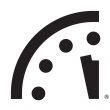 2019 • IT IS STILL 2 MINUTES TO MIDNIGHT
2019 • IT IS STILL 2 MINUTES TO MIDNIGHT
The “new abnormal” that we describe, and that the world now inhabits, is unsustainable and extremely dangerous. The world security situation can be improved, if leaders seek change and citizens demand it. It is two minutes to midnight, but there is no reason the Doomsday Clock cannot move away from catastrophe. It has done so in the past, because wise leaders acted—under pressure from informed and engaged citizens around the world. Today, citizens in every country can use the power of the Internet to fight against social media disinformation and improve the long-term prospects of their children and grandchildren. They can insist on facts, and discount nonsense. They can demand action to reduce the existential threat of nuclear war and unchecked climate change. Given the inaction of their leaders to date, citizens of the world should make a loud and clear demand: #RewindTheDoomsdayClock.
 2018 • IT IS 2 MINUTES TO MIDNIGHT
2018 • IT IS 2 MINUTES TO MIDNIGHT
The failure of world leaders to address the largest threats to humanity’s future is lamentable—but that failure can be reversed. It is two minutes to midnight, but the Doomsday Clock has ticked away from midnight in the past, and during the next year, the world can again move it further from apocalypse. The warning the Science and Security Board now sends is clear, the danger obvious and imminent. The opportunity to reduce the danger is equally clear. The world has seen the threat posed by the misuse of information technology and witnessed the vulnerability of democracies to disinformation. But there is a flip side to the abuse of social media. Leaders react when citizens insist they do so, and citizens around the world can use the power of the Internet to improve the long-term prospects of their children and grandchildren. They can insist on facts, and discount nonsense. They can demand action to reduce the existential threat of nuclear war and unchecked climate change. They can seize the opportunity to make a safer and saner world.
 2017 • IT IS TWO AND A HALF MINUTES TO MIDNIGHT
2017 • IT IS TWO AND A HALF MINUTES TO MIDNIGHT
For the last two years, the minute hand of the Doomsday Clock stayed set at three minutes before the hour, the closest it had been to midnight since the early 1980s. In its two most recent annual announcements on the Clock, the Science and Security Board warned: “The probability of global catastrophe is very high, and the actions needed to reduce the risks of disaster must be taken very soon.” In 2017, we find the danger to be even greater, the need for action more urgent. It is two and a half minutes to midnight, the Clock is ticking, global danger looms. Wise public officials should act immediately, guiding humanity away from the brink. If they do not, wise citizens must step forward and lead the way.
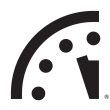 2016 • IT IS STILL 3 MINUTES TO MIDNIGHT
2016 • IT IS STILL 3 MINUTES TO MIDNIGHT
“Last year, the Science and Security Board moved the Doomsday Clock forward to three minutes to midnight, noting: ‘The probability of global catastrophe is very high, and the actions needed to reduce the risks of disaster must be taken very soon.’ That probability has not been reduced. The Clock ticks. Global danger looms. Wise leaders should act—immediately.”
 2015 • IT IS 3 MINUTES TO MIDNIGHT
2015 • IT IS 3 MINUTES TO MIDNIGHT
“Unchecked climate change, global nuclear weapons modernizations, and outsized nuclear weapons arsenals pose extraordinary and undeniable threats to the continued existence of humanity, and world leaders have failed to act with the speed or on the scale required to protect citizens from potential catastrophe. These failures of political leadership endanger every person on Earth.” Despite some modestly positive developments in the climate change arena, current efforts are entirely insufficient to prevent a catastrophic warming of Earth. Meanwhile, the United States and Russia have embarked on massive programs to modernize their nuclear triads—thereby undermining existing nuclear weapons treaties. “The clock ticks now at just three minutes to midnight because international leaders are failing to perform their most important duty— ensuring and preserving the health and vitality of human civilization.”
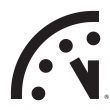 2012 • IT IS 5 MINUTES TO MIDNIGHT
2012 • IT IS 5 MINUTES TO MIDNIGHT
“The challenges to rid the world of nuclear weapons, harness nuclear power, and meet the nearly inexorable climate disruptions from global warming are complex and interconnected. In the face of such complex problems, it is difficult to see where the capacity lies to address these challenges.” Political processes seem wholly inadequate; the potential for nuclear weapons use in regional conflicts in the Middle East, Northeast Asia, and South Asia are alarming; safer nuclear reactor designs need to be developed and built, and more stringent oversight, training, and attention are needed to prevent future disasters; the pace of technological solutions to address climate change may not be adequate to meet the hardships that large-scale disruption of the climate portends.
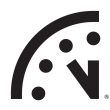 2010 • IT IS 6 MINUTES TO MIDNIGHT
2010 • IT IS 6 MINUTES TO MIDNIGHT
International cooperation rules the day. Talks between Washington and Moscow for a follow-on agreement to the Strategic Arms Reduction Treaty are nearly complete, and more negotiations for further reductions in the U.S. and Russian nuclear arsenal are already planned. Additionally, Barack Obama becomes the first U.S. president to publicly call for a nuclear-weapon-free world. The dangers posed by climate change are still great, but there are pockets of progress. Most notably: At Copenhagen, the developing and industrialized countries agree to take responsibility for carbon emissions and to limit global temperature rise to 2 degrees Celsius.
 2007 • IT IS 5 MINUTES TO MIDNIGHT
2007 • IT IS 5 MINUTES TO MIDNIGHT
The world stands at the brink of a second nuclear age. The United States and Russia remain ready to stage a nuclear attack within minutes, North Korea conducts a nuclear test, and many in the international community worry that Iran plans to acquire the Bomb. Climate change also presents a dire challenge to humanity. Damage to ecosystems is already taking place; flooding, destructive storms, increased drought, and polar ice melt are causing loss of life and property.
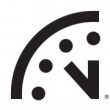 2002 • IT IS 7 MINUTES TO MIDNIGHT
2002 • IT IS 7 MINUTES TO MIDNIGHT
Concerns regarding a nuclear terrorist attack underscore the enormous amount of unsecured—and sometimes unaccounted for—weapon-grade nuclear materials located throughout the world. Meanwhile, the United States expresses a desire to design new nuclear weapons, with an emphasis on those able to destroy hardened and deeply buried targets. It also rejects a series of arms control treaties and announces it will withdraw from the Anti-Ballistic Missile Treaty.
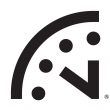 1998 • IT IS 9 MINUTES TO MIDNIGHT
1998 • IT IS 9 MINUTES TO MIDNIGHT
India and Pakistan stage nuclear weapons tests only three weeks apart. “The tests are a symptom of the failure of the international community to fully commit itself to control the spread of nuclear weapons— and to work toward substantial reductions in the numbers of these weapons,” a dismayed Bulletin reports. Russia and the United States continue to serve as poor examples to the rest of the world. Together, they still maintain 7,000 warheads ready to fire at each other within 15 minutes.
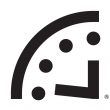 1995 • IT IS 14 MINUTES TO MIDNIGHT
1995 • IT IS 14 MINUTES TO MIDNIGHT
Hopes for a large post-Cold War peace dividend and a renouncing of nuclear weapons fade. Particularly in the United States, hard-liners seem reluctant to soften their rhetoric or actions, as they claim that a resurgent Russia could provide as much of a threat as the Soviet Union. Such talk slows the rollback in global nuclear forces; more than 40,000 nuclear weapons remain worldwide. There is also concern that terrorists could exploit poorly secured nuclear facilities in the former Soviet Union.
 1991 • IT IS 17 MINUTES TO MIDNIGHT
1991 • IT IS 17 MINUTES TO MIDNIGHT
With the Cold War officially over, the United States and Russia begin making deep cuts to their nuclear arsenals. The Strategic Arms Reduction Treaty greatly reduces the number of strategic nuclear weapons deployed by the two former adversaries. Better still, a series of unilateral initiatives remove most of the intercontinental ballistic missiles and bombers in both countries from hair-trigger alert. “The illusion that tens of thousands of nuclear weapons are a guarantor of national security has been stripped away,” the Bulletin declares.
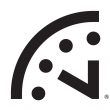 1990 • IT IS 10 MINUTES TO MIDNIGHT
1990 • IT IS 10 MINUTES TO MIDNIGHT
As one Eastern European country after another (Poland, Czechoslovakia, Hungary, Romania) frees itself from Soviet control, Soviet General Secretary Mikhail Gorbachev refuses to intervene, halting the ideological battle for Europe and significantly diminishing the risk of all-out nuclear war. In late 1989, the Berlin Wall falls, symbolically ending the Cold War. “Forty-four years after Winston Churchill’s ‘Iron Curtain’ speech, the myth of monolithic communism has been shattered for all to see,” the Bulletin proclaims.
 1988 • IT IS 6 MINUTES TO MIDNIGHT
1988 • IT IS 6 MINUTES TO MIDNIGHT
The United States and Soviet Union sign the historic Intermediate-Range Nuclear Forces Treaty, the first agreement to actually ban a whole category of nuclear weapons. The leadership shown by President Ronald Reagan and Soviet Premier Mikhail Gorbachev makes the treaty a reality, but public opposition to U.S. nuclear weapons in Western Europe inspires it. For years, such intermediate-range missiles had kept Western Europe in the crosshairs of the two superpowers.
 1984 • IT IS 3 MINUTES TO MIDNIGHT
1984 • IT IS 3 MINUTES TO MIDNIGHT
U.S.-Soviet relations reach their iciest point in decades. Dialogue between the two superpowers virtually stops. “Every channel of communications has been constricted or shut down; every form of contact has been attenuated or cut off. And arms control negotiations have been reduced to a species of propaganda,” a concerned Bulletin informs readers. The United States seems to flout the few arms control agreements in place by seeking an expansive, space-based anti-ballistic missile capability, raising worries that a new arms race will begin.
 1981 • IT IS 4 MINUTES TO MIDNIGHT
1981 • IT IS 4 MINUTES TO MIDNIGHT
The Soviet invasion of Afghanistan hardens the U.S. nuclear posture. Before he leaves office, President Jimmy Carter pulls the United States from the Olympic Games in Moscow and considers ways in which the United States could win a nuclear war. The rhetoric only intensifies with the election of Ronald Reagan as president. Reagan scraps any talk of arms control and proposes that the best way to end the Cold War is for the United States to win
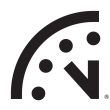 1980 • IT IS 7 MINUTES TO MIDNIGHT
1980 • IT IS 7 MINUTES TO MIDNIGHT
Thirty-five years after the start of the nuclear age and after some promising disarmament gains, the United States and the Soviet Union still view nuclear weapons as an integral component of their national security. This stalled progress discourages the Bulletin: “[The Soviet Union and United States have] been behaving like what may best be described as ‘nucleoholics’—drunks who continue to insist that the drink being consumed is positively ‘the last one,’ but who can always find a good excuse for ‘just one more round.’”
 1974 • IT IS 9 MINUTES TO MIDNIGHT
1974 • IT IS 9 MINUTES TO MIDNIGHT
South Asia gets the Bomb, as India tests its first nuclear device. And any gains in previous arms control agreements seem like a mirage. The United States and Soviet Union appear to be modernizing their nuclear forces, not reducing them. Thanks to the deployment of multiple independently targetable reentry vehicles (MIRV), both countries can now load their intercontinental ballistic missiles with more nuclear warheads than before.
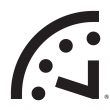 1972 • IT IS 12 MINUTES TO MIDNIGHT
1972 • IT IS 12 MINUTES TO MIDNIGHT
The United States and Soviet Union attempt to curb the race for nuclear superiority by signing the Strategic Arms Limitation Treaty (SALT) and the Anti-Ballistic Missile (ABM) Treaty. The two treaties force a nuclear parity of sorts. SALT limits the number of ballistic missile launchers either country can possess, and the ABM Treaty stops an arms race in defensive weaponry from developing.
 1969 • IT IS 10 MINUTES TO MIDNIGHT
1969 • IT IS 10 MINUTES TO MIDNIGHT
Nearly all of the world’s nations come together to sign the Nuclear Non-Proliferation Treaty. The deal is simple—the nuclear weapon states vow to help the treaty’s non-nuclear weapon signatories develop nuclear power if they promise to forego producing nuclear weapons. The nuclear weapon states also pledge to abolish their own arsenals when political conditions allow for it. Although Israel, India, and Pakistan refuse to sign the treaty, the Bulletin is cautiously optimistic: “The great powers have made the first step. They must proceed without delay to the next one—the dismantling, gradually, of their own oversized military establishments.”
 1968 • IT IS 7 MINUTES TO MIDNIGHT
1968 • IT IS 7 MINUTES TO MIDNIGHT
Regional wars rage. U.S. involvement in Vietnam intensifies, India and Pakistan battle in 1965, and Israel and its Arab neighbors renew hostilities in 1967. Worse yet, France and China develop nuclear weapons to assert themselves as global players. “There is little reason to feel sanguine about the future of our society on the world scale,” the Bulletin laments. “There is a mass revulsion against war, yes; but no sign of conscious intellectual leadership in a rebellion against the deadly heritage of international anarchy.”
 1963 • IT IS 12 MINUTES TO MIDNIGHT
1963 • IT IS 12 MINUTES TO MIDNIGHT
After a decade of almost non-stop nuclear tests, the United States and Soviet Union sign the Partial Test Ban Treaty, which ends all atmospheric nuclear testing. While it does not outlaw underground testing, the treaty represents progress in at least slowing the arms race. It also signals awareness among the Soviets and United States that they need to work together to prevent nuclear annihilation.
 1960 • IT IS 7 MINUTES TO MIDNIGHT
1960 • IT IS 7 MINUTES TO MIDNIGHT
Political actions belie the tough talk of “massive retaliation.” For the first time, the United States and Soviet Union appear eager to avoid direct confrontation in regional conflicts such as the 1956 Egyptian-Israeli dispute. Joint projects that build trust and constructive dialogue between third parties also quell diplomatic hostilities. Scientists initiate many of these measures, helping establish the International Geophysical Year, a series of coordinated, worldwide scientific observations, and the Pugwash Conferences, which allow Soviet and American scientists to interact.
 1953 • IT IS 2 MINUTES TO MIDNIGHT
1953 • IT IS 2 MINUTES TO MIDNIGHT
After much debate, the United States decides to pursue the hydrogen bomb, a weapon far more powerful than any atomic bomb. In October 1952, the United States tests its first thermonuclear device, obliterating a Pacific Ocean islet in the process; nine months later, the Soviets test an H-bomb of their own. “The hands of the Clock of Doom have moved again,” the Bulletin announces. “Only a few more swings of the pendulum, and, from Moscow to Chicago, atomic explosions will strike midnight for Western civilization.”
 1949 • IT IS 3 MINUTES TO MIDNIGHT
1949 • IT IS 3 MINUTES TO MIDNIGHT
The Soviet Union denies it, but in the fall, President Harry Truman tells the American public that the Soviets tested their first nuclear device, officially starting the arms race. “We do not advise Americans that doomsday is near and that they can expect atomic bombs to start falling on their heads a month or year from now,” the Bulletin explains. “But we think they have reason to be deeply alarmed and to be prepared for grave decisions.”
 1947 • IT IS 7 MINUTES TO MIDNIGHT
1947 • IT IS 7 MINUTES TO MIDNIGHT
As the Bulletin evolves from a newsletter into a magazine, the Clock appears on the cover for the first time. It symbolizes the urgency of the nuclear dangers that the magazine’s founders—and the broader scientific community—are trying to convey to the public and political leaders around the world.
